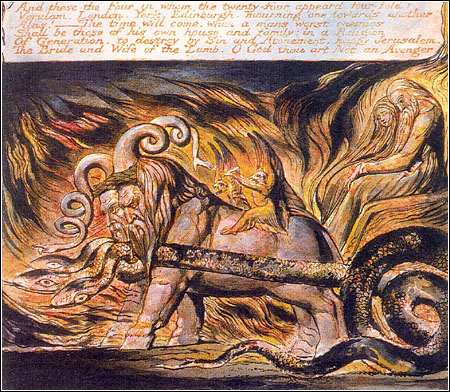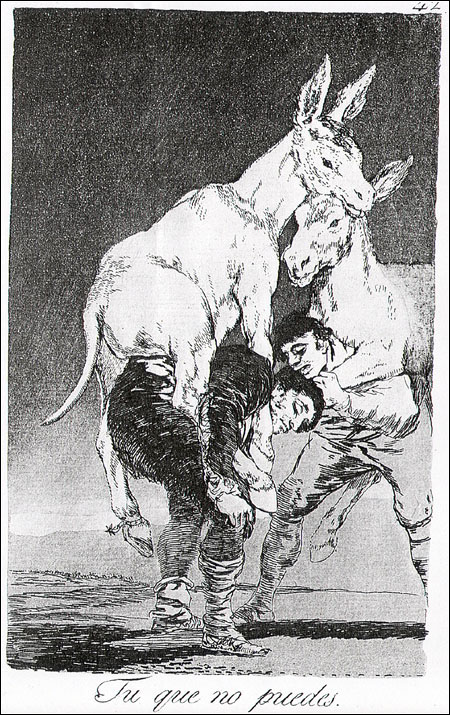An Exhibition Evolves 'Picturing
Animals' marries animal imagery and the process of printmaking in an
exciting new exhibition. Rand Huebsch guides us through the show
 In the spring of 2001, the New York Hall of Science presented
"Picturing Animals: Contemporary Printmakers Create Natural History
Images." In creating that show, I was to discover that curating, with
its revisions and its manipulation of material, has parallels with
printmaking, my primary creative activity. While faithful to the
initial concept, the finished show would represent a months-long
process of evolution.
In the spring of 2001, the New York Hall of Science presented
"Picturing Animals: Contemporary Printmakers Create Natural History
Images." In creating that show, I was to discover that curating, with
its revisions and its manipulation of material, has parallels with
printmaking, my primary creative activity. While faithful to the
initial concept, the finished show would represent a months-long
process of evolution.
Laying the Groundwork
For many years, two strong interests of mine have been animal
imagery and the process of printmaking. "Picturing Animals" was
conceived as an exploration of the centuries-old tradition that links
them. An additional aim was to present the work of contemporary
printmakers working within that tradition, some using established
techniques, others experimenting with recently invented materials. In
considering these aims and writing a proposal, I realised that this
educational show would require two sections: historical and
contemporary. Each would comment on the other; together, they would
cohere into a larger, meaningful whole.
Because the New York Hall of Science has an educational mission, it
seemed an ideal venue for the show. The Hall is a science and
technology centre, featuring more than 225 permanent interactive
exhibits. It was my good fortune, when first presenting the proposal in
the summer of 2000, to speak with Dr. Marcia Rudy, Director of Public
Programs/Special Events. Her enthusiasm for the project was crucial, as
were her equanimity and attention to detail during its evolution. With
the Hall's entry, there was a shift in the project's focus.
In the initial proposal, all of the images for the show's historical
section had been European. Now, that section had to represent a broader
range of cultures, as the Hall is located in Queens, the most
ethnically diverse community in the United States. Expanding the show's
scope allowed for a larger listing of processes, including the elaborate Japanese stencils called katagami, rubbings from Han Dynasty stamped bricks, and adinkra, African fabric-stamp blocks carved from the rinds of calabashes.
That revision was among the first of many editorial choices. For
example, the wonderful Durer rhinoceros, which I had considered for the
relief-printing description, seemed an overly familiar image. Instead,
I used Hans Grien Baldung's dynamic woodcut of seven horses fighting.
A unit called "The Evolution of a Print" was to include dramatically
different states of Picasso's bull lithograph. It did not appear,
partly due to space limitation, but also because it would have skewed
the show's balance. Sometimes the relationship of images was the key:
for their similarity of pose and contrast in style, I chose two polar
bears - a 19th-century French etching and a 20th-century Inuit stone cut. In order to study image possibilities together, I taped them to an expanse of wall in my apartment.
The Exhibition
1. The Historical Section
To accompany the text of this section's five units, there were thirty
animal prints in reproduction, from scientific illustration to images
of personal mythology. "What is a Print," the first unit, discussed
basic concepts, citing the rubber stamp as a familiar example of a
printing matrix. A photo of an Ice Age cave painting
showed not only man's early depiction of animals, but also hand
stencils - possibly the first kind of printmaking. Next, "Processes"
gave concise definitions of four printing techniques: relief (woodcut),
intaglio (including etching), lithography, and stencil
(screenprinting). In keeping with the Hall's focus on science, the text
alluded to technologies; it mentioned, for example, that intaglio
printing may have derived from the decorative incising used in metal
working.
 "Man
and Animal" owed its genesis to Choensai Eishin's woodcut of a
falconer, which I came across while doing research at the New York
Public Library. This image gave rise to the idea for a unit of eleven
prints that depicted man/animal interactions. They ranged from John Muafangejo's lion hunters and Toulouse-Lautrec's jockey, to Goya's satirical human-riding donkeys and William Blake's human-headed quadrupeds pulling a chariot. "Man
and Animal" owed its genesis to Choensai Eishin's woodcut of a
falconer, which I came across while doing research at the New York
Public Library. This image gave rise to the idea for a unit of eleven
prints that depicted man/animal interactions. They ranged from John Muafangejo's lion hunters and Toulouse-Lautrec's jockey, to Goya's satirical human-riding donkeys and William Blake's human-headed quadrupeds pulling a chariot.
The last two units served to emphasise printmaking's availability and
to act as a bridge to the contemporary work. One segment had captioned
photos of high school students as they made etchings for a
collaborative book, a copy of which was on display. The other segment
had text that instructed viewers in designing, carving, and printing
their own rubber stamps; some of the modern printmakers provided
rubber-stamp images for that text.
2. The Contemporary Section
This section displayed thirty-five prints on a 65-foot wall that
stood at a right angle to the historical section's 14-foot one. In
addition to me, the contemporary artists were Susanna Bergtold, Donna
Evans, John LoCicero, and Deborah Tint. Twelve different processes were
represented. The traditional ones were aquatint, etching, linocut,
lithography, mezzotint, wood engraving, woodcut, and Ukiyo-e. The new
techniques, which used recently invented materials, were alumigraph,
carborundum aquatint, gessoprint, and silicone intaglio. A series of
text panels explained many of the processes.
The development of this section had been largely concurrent with the
historical one. It was here, in particular, that the project's
collaborative aspect came into play. I had worked with these artists
before. I respected their art work and also knew that they would
contribute in the necessary planning meetings. Their input would prove
helpful when I wrote the text of the exhibition proposal and, later,
that of the show itself.
For the exhibition, each artist made a number of decisions, such as
selecting his or her images and whether to mat or to float the work
under the plexiglas sheets. Each artist chose several printmaking tools
for inclusion in the nearby display case. Artist statements served to
reveal the thinking behind the work. They ranged in tone from the
lyrical - "Animal familiars (squirrels, pigeons, sparrows,
crows, dogs, and cats) resonate within me as recallable rhythms of
touch and sight", to the humorous - "The woodcuts of reptiles are my
tribute to the delightful scientific illustrations of the Age of
Exploration (well, invasion)".
Several of the artists made new work specifically for the show. One
made drawing visits to the Queens Wildlife Center, then used those
sketches as the basis for his prints. While intending to create new
images, ultimately I used pre-existing work. This was not due to lack
of time. My creative focus had been the shaping of the exhibition. The
research, writing, and collaborative process were the elements with
which I worked, and I hope that the resulting show will have a life
beyond its first venue.
|
|
 |
|
|
